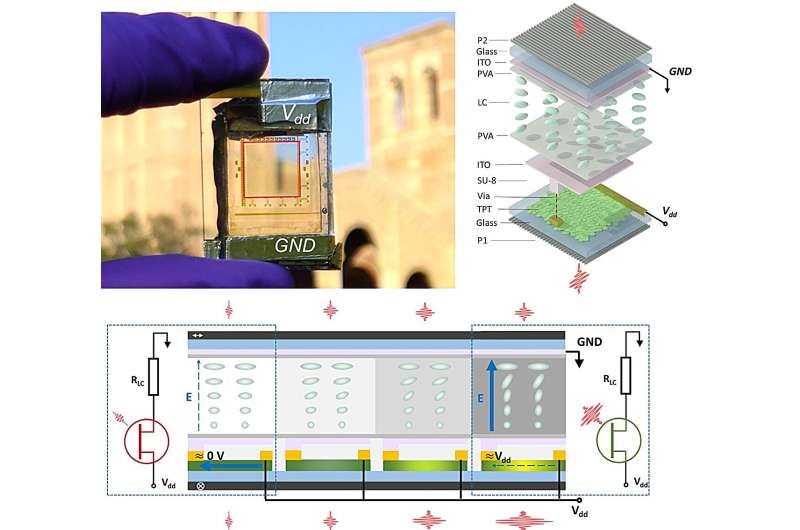This article has been reviewed according to Science X's editorial process and policies. Editors have highlighted the following attributes while ensuring the content's credibility:
fact-checked
peer-reviewed publication
trusted source
proofread
2D optoelectronic neuron array achieves broadband and low-loss optical nonlinearity accessible with ambient light

Light can compute functions during its propagation and interaction with structured materials, with high speed and low energy consumption. Achieving universal computing using all-optical neural networks requires optical activation layers with nonlinear dependence on input. However, the existing optical nonlinear materials are either slow or have very weak nonlinearity under the natural light intensity levels captured by a camera. Therefore, the design and development of new optical activation functions is essential for realizing optical neural networks that compute with ambient light.
In a paper published in Nature Communications, a research team led by Professor Xiangfeng Duan and Professor Aydogan Ozcan from the University of California, Los Angeles (UCLA), U.S., reported a new strategy using an optoelectronic neuron array to achieve strong optical nonlinearity at low optical intensity for broadband incoherent light.
Their device heterogeneously integrates two-dimensional (2D) transparent phototransistors (TPTs) with liquid crystal (LC) modulators. Under low light illumination, the TPT is highly resistive, and most of the voltage drop occurs on the TPT. The LC is unperturbed and remains transmissive. At high input optical power, however, the TPT becomes conductive, so most of the voltage drops across the LC layer, shutting off the optical transmission.
In their experimental demonstration, the designed optoelectronic neurons allowed spatially and temporally incoherent light in the visible wavelengths to nonlinearly modulate its own amplitude with only ~20% photon loss. They fabricated a 100×100 (10,000) optoelectronic neuron array and demonstrated a strong nonlinear behavior under laser and white light illumination.
The nonlinear optoelectronic array was further integrated as part of a cellphone-based imaging system for intelligent glare reduction, selectively blocking intense glares while presenting little attenuation for the weaker-intensity objects within the imaging field of view.
The device modeling suggests a very low optical intensity threshold of 56 μW/cm2 to generate a significant nonlinear response, and a low energy consumption of 69 fJ per photonic activation for the optimized devices.
Such an optoelectronic neuron array enables nonlinear self-amplitude modulation of spatially incoherent light, featuring a low optical intensity threshold, strong nonlinear contrast, broad spectral response, fast speed and low photon loss. The performance is highly desirable for image processing and visual computing systems that do not rely on intense laser beams.
Besides intelligent glare reduction, the cascaded integration of optoelectronic neuron arrays with linear diffractive optical processors could be used to construct nonlinear optical networks, potentially finding widespread applications in computational imaging and sensing, also opening the door for new nonlinear optical processor designs using ambient light.
More information: Dehui Zhang et al, Broadband nonlinear modulation of incoherent light using a transparent optoelectronic neuron array, Nature Communications (2024). DOI: 10.1038/s41467-024-46387-5
Journal information: Nature Communications




















